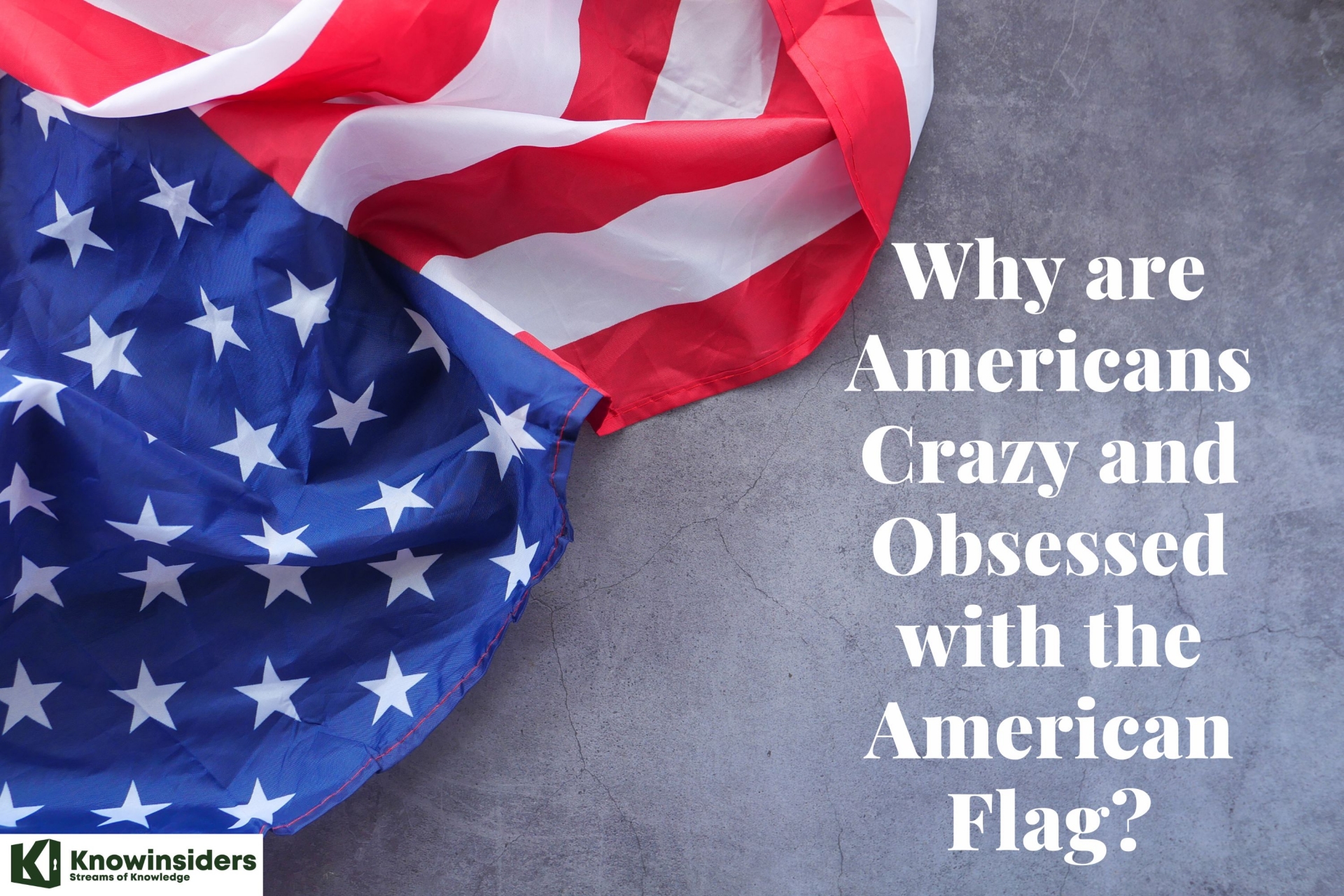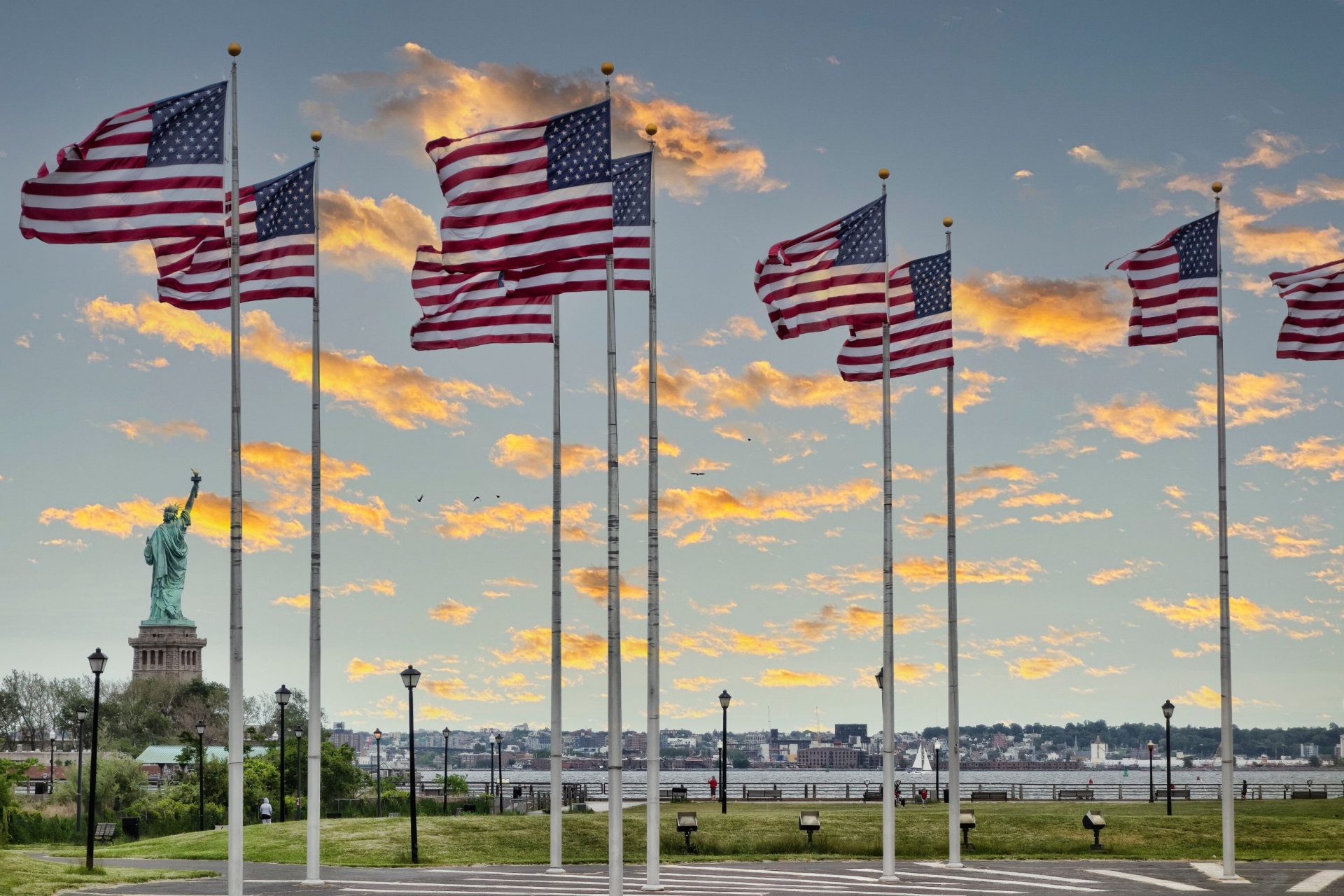Why are Americans Crazy and Obsessed with the American Flag?
 |
| Why are Americans Crazy and Obsessed with the American Flag? |
The American Flag is not just a piece of fabric. It is symbolic of the fabric of our society as a nation. It has been carried far and wide as a symbol of American pride, all the while serving as an emblem of the freedom we hold dear.
Since the first iteration of the American flag found itself atop the colonial warship Alfred in 1775, Old Glory's tri-color facade has undergone 26 makeovers. The current 50-star American flag, adopted by President Eisenhower in 1960, has been in use longer than any other version. What began as a symbol of independence from Great Britain is now, for better or worse, a universal symbol of America's influence around the world.
At home, the American flag is literally everywhere: on cars, on t-shirts, and hanging atop flagpoles outside businesses. From classrooms to sports stadiums to political arenas, the Stars and Stripes remain a centerpiece of public engagement in the United States. Why are Americans obsessed with the American flag? The actual answer is below:
A Brief History of the American Flag
On January 1, 1776, the Continental Army was reorganized in accordance with a Congressional resolution, which placed American forces under George Washington's control. On that New Year's Day the Continental Army was laying siege to Boston, which had been taken over by the British Army. Washington ordered the Grand Union flag hoisted above his base at Prospect Hill. It had 13 alternate red and white stripes and the British Union Jack in the upper left corner (the canton).
On June 14, 1777, to establish an official flag for the new nation, the Continental Congress passed the first Flag Act: "Resolved, that the flag of the United States is made of thirteen stripes, alternate red and white; that the union is thirteen stars, white in a blue field, representing a new Constellation."
Between 1777 and 1960, Congress passed several acts that changed the shape, design and arrangement of the flag and allowed for additional stars and stripes to be added to reflect the admission of each new state:
- Act of January 13, 1794 provided for 15 stripes and 15 stars after May 1795.
- Act of April 4, 1818 provided for 13 stripes and one star for each state, to be added to the flag on the 4th of July following the admission of each new state, signed by President Monroe.
- Executive Order of President Taft, June 24, 1912 established proportions of the flag and provided for arrangement of the stars in six horizontal rows of eight each, a single point of each star to be upward.
- Executive Order of President Eisenhower, January 3, 1959 provided for the arrangement of the stars in seven rows of seven stars each, staggered horizontally and vertically.
- Executive Order of President Eisenhower, August 21, 1959 provided for the arrangement of the stars in nine rows of stars staggered horizontally and eleven rows of stars staggered vertically.
Current Flag
Today the American flag consists of thirteen horizontal stripes, seven red, alternating with six white. The stripes represent the original 13 colonies, the stars represent the 50 states of the Union.
Color Symbolism
-
Red symbolizes Hardiness and Valor.
-
White symbolizes Purity and Innocence.
-
Blue represents Vigilance, Perseverance and Justice.
How many stars and stripes are on the flag?
There are 50 stars representing the 50 states and there are 13 stripes representing the 13 original colonies.
Flag: thirteen equal horizontal stripes of red (top and bottom) alternating with white; there is a blue rectangle in the upper hoist-side corner bearing 50 small white five-pointed stars arranged in nine offset horizontal rows of six stars (top and bottom) alternating with rows of five stars; the 50 stars represent the 50 states, the 13 stripes represent the 13 original colonies; known as Old Glory; the design and colors have been the basis for a number of other flags including Chile, Liberia, Malaysia, and Puerto Rico from The CIA World Factbook.
What are the specifications for the colors of the flag?
 |
| Photo: Pexels |
The color names and specifications (Pantone, RGB, CMYK and web-hex) of the U.S. flag are as follows:
Old Glory Blue
- Pantone: 282C
- RGB: 0,33,71
- CMYK: 100,87,37,51
- HEX: #002147
Old Glory Red
- and PMS 193C.
- RGB: 187,19,62
- CMYK: 8,100,77,1
- HEX: #BB133E
Why is the American flag important to America?
The national flag is an important part of any country’s traditions. Arguably, the United States is no different from other countries in this regard. But this article is about the United States, and Americans definitely have a very intimate relationship with the flag.
The flag plays a dual role in the United States. First, it is a symbol of respect, patriotism and veterans. You stand for the flag before sporting events, children pledge allegiance to it at school — though they can’t be forced to — and it is an integral part of any official ceremony that happens in the country. The flag is an honored item.
On the other side of things, the flag is also a huge commercial product. You can walk into stores with entire aisles filled with the American flag on posters, pencils, notebooks, shirts, bathing suits, hats, scarves and, you know, actual flags.
Like with many aspects of the United States, this cashing in on the stars and stripes may sound contradictory to its honored status. Yet somehow the two ideas of what the flag means coexist in the American consciousness. After the attacks on September 11, 2001, demand for flag merchandise skyrocketed as people wanted to declare their patriotism. The flag is all about pride, and Americans express pride in many, many different ways.
Why are Americans Crazy and Obsessed with the American Flag?
The United States spans an immense expanse of land and is populated by an extreme variety of peoples. American hail from incredibly varied walks of life. They comprise innumerable countries and cultures.
So what is the single element that every American can share? In a land of different colors and creeds, there is but one element that they can all claim. And that is the American flag. They have different histories, different languages, different foods, and different political beliefs. But from Connecticut to California; Houston to Honolulu; Alaska or otherwise, the American flag flies high and proud, uniting this broad and amazing country that everyone calls home.
How American Children Are Taught To Revere The Flag?
Adoration of the flag begins at a young age in America, where school children salute it every morning during the Pledge of Allegiance. "I do not know of another nation where school children are expected to salute the flag in a formal ritual every day," Adam Smith shared with How Stuff Works.
First introduced in 1892, the Pledge of Allegiance came around at a time when droves of immigrants from across Europe were arriving on American shores. In an effort to assimilate the children of these immigrants, organizations distributed the flag to schools. This led to a custom that continues to this day, one some historians and legal experts interpret as a dangerous form of worship. In 1940, the pledge reached the Supreme Court after Jehovah’s Witnesses were expelled from their school for refusing to stand for it. In an 8-1 ruling, the court decided schools had the power to “foster a sentiment of national unity."
How Important of The Flag And The National Anthem in Sports?
 |
| Photo: Pexels |
When professional footballer Colin Kaepernick refused to stand for the national anthem during a game in 2016, his act of civil disobedience drew both outrage and support. Kaepernick's choice spawned a major reckoning in both professional and local sports, one that continues to reach new heights in the wake of Minneapolis resident George Floyd's demise at the hands of a white police officer in 2020.
The deep connection between American sports and the American flag dates back to WWI when the Chicago White Sox decided to put American flags on their jerseys. The trend spread and grew during the 20th century. After September 11, American flags were on full display at almost all major sporting events. Every Major League Baseball team had flags embroidered on their hats. America's favorite pastime became a stage for players to support troops abroad and, of course, pay tribute to the flag as a symbol of unity and strength.
This flag-filled spectacle extends far beyond baseball into football and basketball. Many football teams, whether college or professional, emblazon American flags on their helmets. College basketball teams like Duke wear flag patches on their jerseys. The most dramatic use of the flag at these games, though, occurs when giant versions of Old Glory are spread out on stadium floors during pre-game celebrations. In 2017, the Salt Lake City-based 50 Star Productions booked its massive flags for some 120 events, bringing in $4,000 to $7,500 a pop.
Fascinating Facts About The American Flag
There have been 27 versions of the American Flag.
From 1777 original that had 13 stars and 13 stripes for the American colonies, there have been many changes and iterations of the flag. Each time a state was added to the union, a star was added. We, of course, now stand with 50 stars and 13 stripes.
The flag can be displayed for all 24 hours.
While it is Federal law that the flag should be displayed from sunrise to sunset (unless there’s inclement weather), there are measures that can be taken to show the flag for all 24 hours. All that needs to be added is proper illumination of the flag so it can be seen in the dark.
The colors were chosen carefully.
The Red, White and Blue did not just happen by accident. The founding fathers wanted the colors to have meaning, not just look visually pleasing. Red symbolizes hardiness and valor, white symbolizes purity and innocence and blue represents vigilance, perseverance and justice.
The current design wasn’t professionally made.
Rather, it was then 17-year-old high school student, Robert G. Heft, of Lancaster, Ohio who submitted the design in a contest in 1958. It was chosen out of over 1,500 submissions by President Dwight Eisenhower.
The current flag is the only one to have lasted more than 50 years.
As stated above, there have been many changes to the design of the American Flag. But the one we currently observe is the longest-running iteration of the symbol, likely because no states have been added to the union since 1959.
A snippet of the flag the Star-Spangled Banner was written about was sold in 2011.
The flag that flew at Ft. McHenry, immortalized by Francis Scott Key, is still around. A 2″ x 5″ swatch of it was sold at an auction in 2011 for a whopping $38,000. The rest of the flag is on display at Smithsonian’s National Museum of American History.
The Flag has a national day of recognition.
Flag Day, which celebrates the anniversary of the Flag Resolution of 1777, was established by the Proclamation of President Woodrow Wilson on May 30th, 1916 after years of local celebrations.
Flags should be disposed of in a “dignified manner.”
If an American Flag is damaged beyond repair and you need to dispose of it, you can burn it with dignity. Many municipalities around the country conduct flag burnings on Memorial Day or the Fourth of July where you can participate.
The flag can touch the ground and still be used.
There is a myth that once a flag touches the ground it needs to be burned or disposed of. That’s not entirely true. If a flag is soiled or touches the ground, it can be washed and dry cleaned and continue to be used.
Five American Flags have made it to the moon.
You have probably seen Neil Armstrong on the moon with an American Flag, but he is not the only one to plant one on the surface of the moon. Five additional Apollo missions, 12, 14, 15, 16, and 17, ended with an astronaut placing a flag on the moon.
 Top 15 Highest Paying Federal Government Jobs In America Top 15 Highest Paying Federal Government Jobs In America Federal jobs exist within the branches of government, which are executive, legislative, and judicial. Some federal jobs involve working as politicians or for politicians or ... |
 Why Do Americans Not Use Their Vacation Days? Why Do Americans Not Use Their Vacation Days? More than half of Americans don’t use all of their time off to take vacation days. Why? Find out the answer to this tricky question ... |
 Top 10 States Where Many Postmen Are Bitten By Dogs In America Top 10 States Where Many Postmen Are Bitten By Dogs In America Dog attacks pose a serious threat to postal employees and the public. Here are the top states for postal carrier dog bites that everyone should ... |























